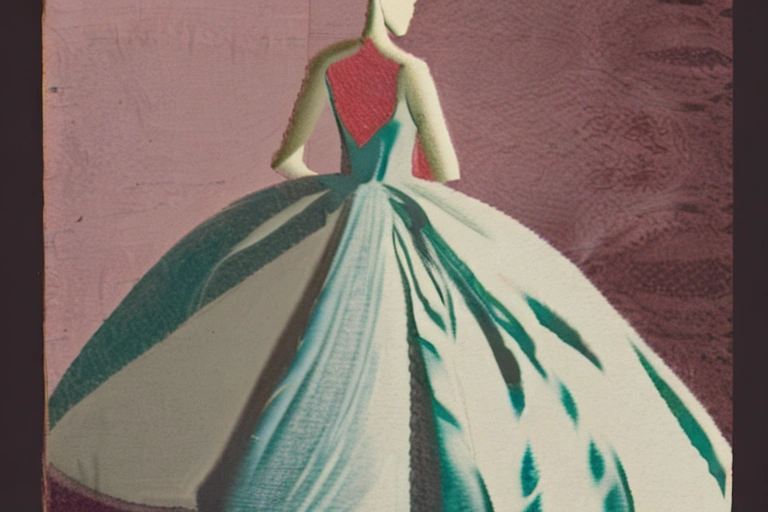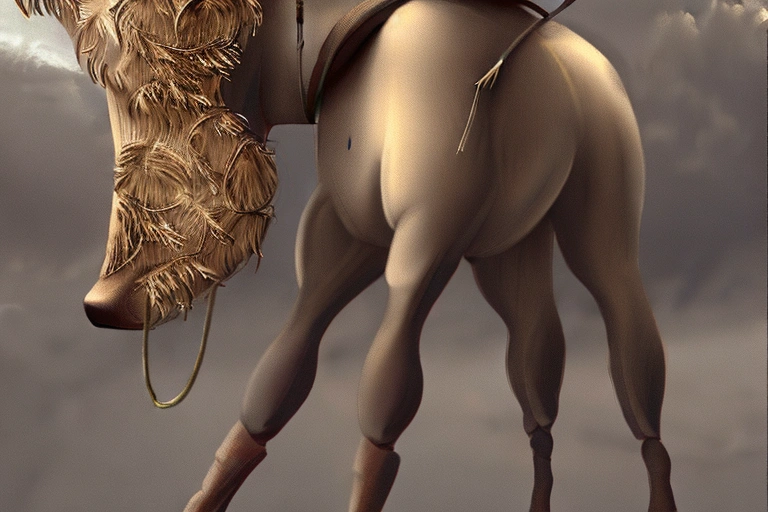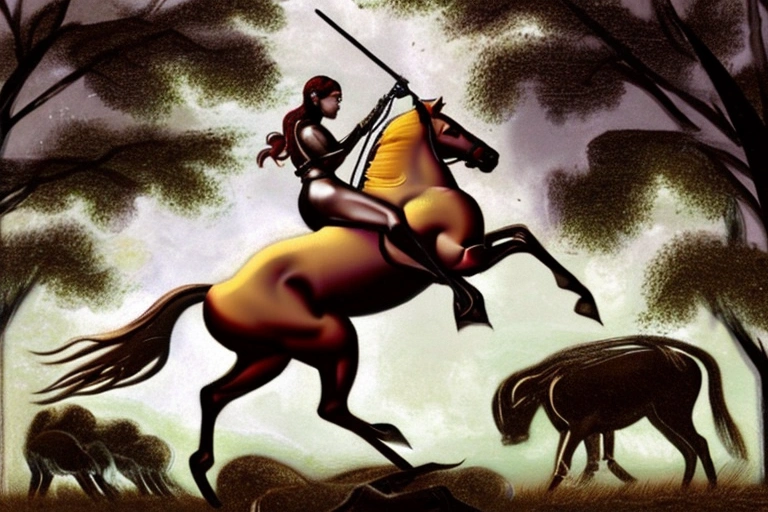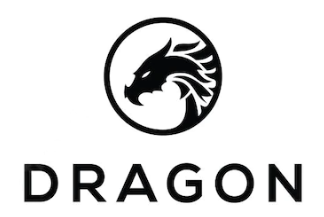The Evolution of the Centaur: From Mythological Beast to Iconic Symbol
The centaur has been an iconic symbol for centuries, but do you know where it originated from? The centaur has an interesting history that dates back to ancient Greece and has evolved over time. In this blog post, we will explore the fascinating story of the centaur and how it became such an iconic symbol. From its humble beginnings in mythology to its current status as a beloved cultural touchstone, we will dive into the evolution of the centaur and uncover why it has become such a beloved figure in our culture.

Introduction to the Centaur
The centaur is one of the most recognizable and iconic symbols in the world. Centaurs are creatures that originated from Greek mythology and are typically depicted as half-human, half-horse. They are often associated with wisdom, strength, and courage.
The centaur is one of the oldest symbols in the world. They first appeared in ancient Greece and were often depicted as half-human, half-horse creatures with a human head and horse body. They were often used as symbols of wisdom, strength, and courage. In later years, the centaur became an icon for peace and love.
The Mythology of the Centaur
Centaurs are a popular subject of mythology and art. They are depicted as half-man, half-horse creatures, and their origins are uncertain. Some say they are the offspring of a union between a horse and a human, while others believe they are the offspring of a union between a horse and a bull. Regardless of their origins, centaurs were popularized in classical times and have since become an iconic symbol.
The Evolution of the Centaur in Art and Literature
Centaurs have been depicted in art and literature for centuries, often as symbols of heroism and bravery. In Greek mythology, centaurs are creatures with the upper body of a horse and the lower body of a human. They were said to be fierce fighters and hunters, but also gentle companions and protectors. In Roman culture, centaurs were frequently depicted on coins and jewelry as guardian creatures.
Over time, the portrayal of centaurs has evolved considerably. In ancient Greece and Rome, they tended to be depicted as wild animals that battled alongside gods in combat. Later artists started to idealize them into anthropomorphic beings with unique personalities and characteristics. This shift can be seen most notably in paintings by Michelangelo (1475-1564) , who portrayed centaurs as proud noblemen with striking features such as horns or ears.
Today, centaurs continue to be widely popularized through various pieces of art and literature. For example, Harry Potter author JK Rowling created a fictitious race of centaur-like creatures for her novels set in the wizarding world . Centaur imagery is also often used in advertising campaigns or product designs , helping to promote positive values such as strength, courage, and independence
The Centaur in Popular Culture
Origins in Greek Mythology
In Greek mythology, the centaurs were a race of horse-like creatures with human upper bodies and horned heads. They were usually associated with violence and hunting, but also had a peaceful side as they were known for their great skills in archery and horseriding. The first mention of centaurs can be found in Homer’s Iliad where they are mentioned as fighting on the side of King Peleus against Achilles. Throughout classical antiquity, centaurs became well-known symbols of strength and male power.
Centaurs continued to feature prominently in art and literature throughout the Middle Ages and Renaissance. One of the most famous examples is Dante Alighieri’s Divine Comedy, where the centaur Cacus tries to stop Dante from reaching the top of Mount Purgatory. In later centuries, centaurs continued to be popular motifs for painters and sculptors, most notably Michelangelo’s famed statue of David.
The popularity of centaurs in popular culture has continued into the present day. They can often be found in comic books and video games, as well as being used as symbols for brands such as Nike and Pepsi.
Centaur Symbolism Throughout History
Centaur symbolism has been present in popular culture for centuries, and has often been used as a symbol of balance and duality. Centaurs can be found in art, literature, and mythology across the world, representing different aspects of human nature.
In Greco-Roman mythology, centaurs were half man, half horse. They were typically portrayed as being powerful but chaotic creatures who acted on instinct rather than reason. Some scholars believe that the centaur was inspired by depictions of Celtic heroes such as Cuchulainn, who were said to have fought on foot with spear and battle-axe while riding on horses or bulls. The centaur is also commonly associated with fertility because he is depicted as combining qualities of both male and female animals.
Centaur symbolism has been used throughout history to reflect different aspects of human nature. In the medieval period, for example, centaurs were often depicted as symbols of strength and power. They were commonly featured in artworks depicting battles and violent scenes, such as Triptych of the Battle of Vouillé or The Chariot Race at Olympia. During the Renaissance era, however, centaurs began to be seen more symbolically as representations of duality and balance. This trend can be found in works such as Leonardo da Vinci’s Mona Lisa or Michelangelo’s David statue. Centaur symbolism continues to be used today, most notably in musical genres such as hard rock and heavy metal.
The Impact of the Centaur on Literature, Art and Popular Culture
The centaur has had a significant impact on literature, art and popular culture over the centuries. Centaurs are depicted in many different ways, but their most iconic image is that of a half-man, half-horse creature. They have been used as symbols for everything from love to wisdom. In mythology, centaurs were often considered to be offspring of the gods and goddesses who lived beside the river Styx. The centaur was also frequently used as a symbol for change and progress.
Modern Representations of the Centaur
Centaurs are often depicted in popular culture with a mix of traits, some representing their mythical roots and others reflecting the more recent portrayals in arts and literature. In prehistoric art, centaurs almost always appear as animals with horse or camel-like bodies but human legs, often holding spears or other weaponry. Centaurs were one of the first creatures to be depicted in art, appearing all over the world from Europe to East Asia.
Modern representations of centaurs vary greatly, though they typically retain at least some characteristics of their mythological ancestors. Some centaurs are tall and muscular with human-like heads and arms; others are shorter and stockier with animalistic features. They may also be brightly colored with fiery hair or horns, looking like something out of a fairy tale.
Centaurs are often depicted in popular culture as playful or friendly creatures, either sidekicks or friends to humans. Some famous examples include Johnny Depp’s portrayal of Don Quixote’s trusty steed, Sancho Panza, in the 2003 blockbuster film adaptation; and Disney’s 1986 animated feature film The Little Mermaid, which features Ursula as a centaur who tricks Atlantean sailors into thinking she is a mermaid before turning them into frogs.
Modern representations of centaurs vary greatly but they retain some aspects from their mythological ancestors
Modern Interpretations of the Centaur
Centaurs have been depicted in a variety of ways over the years, from being simple beasts to iconic symbols. In recent years, they have been used as a symbol for gay rights and the legalization of marijuana.
The centaur has been a popular subject for artists and sculptors for centuries. One of the earliest representations is on an ancient Greek vase, which shows a centaur fighting on horseback against a lion. Centaurs continued to be popular subjects throughout the Middle Ages, and many paintings and sculptures depict them in battle or riding horses.
During the Renaissance, artists began to use the centaur as a symbol for beauty and innocence. They often depicted him with a gentle look on his face and a flowing mane. This interpretation of the centaur continued into the 20th century, when he was often used as an allegory for peace and harmony.
The centaur has also been used as a symbol for gay rights and the legalization of marijuana. In recent years, he has become popular as a symbol for gay rights because of his association with homosexuality in ancient mythology. He is often depicted as being happy and carefree, which is in contrast to the traditional image of the centaur as a warrior. The legalization of marijuana has also given the centaur a new purpose: as a symbol for freedom and liberation. Many people see him as a symbol of rebellion against traditional values, and they use him to represent their own views on marijuana legalization.

Symbolic Meanings of the Centaur
According to legend, centaurs were half man, half horse. Centaurs are often depicted as elusive creatures with horns and hooves. They are commonly used in modern art and fashion to symbolize the duality of human nature: the ability to be both graceful and powerful.

Representations of Gender and Power in the Centaur
Centaurs have always been seen as a symbol of masculinity and power. This can be seen in the many representations of centaurs throughout history. In mythology, they are often depicted as being half-man, half-horse. They are also known for their tattoos, which were likely meant to show off their bravery and strength.
One reason that centaurs have been seen as a symbol of masculinity is because they represent strength in both physical and mental forms. Centaurs are able to dualize easily – meaning that they can transition from being one entity (physical form) to another (mental form) very quickly. This allows them to take on different roles effectively and make rapid decisions under pressure.
The other important factor that contributes to the symbolism of centaurism is its connection with sexuality and gender identity. Although there is no clear answer as to why this is, it seems that centaurism embodies concepts such as duality, changefulness, versatility, aggressiveness and domination/submission either implicitly or explicitly – all qualities which are associated with masculinity by definition.

The Role of the Centaur in Ancient Greek Religion
The centaur represents a transitional figure in Greek mythology, between the races of human and horse. They are often depicted as half-horse, half-man and were generally seen as benevolent creatures. Centaurs were commonly associated with wisdom, courage, and strength. In some cases they even served as guardians or protectors of young children.
Centaurs played an important role in ancient Greek religion and mythology. They were considered to be intermediaries between the gods and humanity, serving as vehicle for divine messages oracles. Some believe that the centaur was originally a monstrous creature that was gradually transformed into a symbol of benevolence and enlightenment due to its frequent interactions with humans.

Representations of the Centaur in Different Cultures
Centaurs have been depicted in a variety of ways across cultures. In ancient Greece, they were often seen as creatures with the body of a horse and the head of a man. They were often depicted as half-man, half-horse, or as full-fledged horses with human heads. In Rome, centaurs were associated with wild nature and were often depicted as fierce and dangerous creatures. They were also frequently depicted in art as companions of heroes and gods. Today, centaurs are still seen in art and literature around the world, and they continue to be an iconic symbol of the half-man, half-horse creature.
How the Image of the Centaur Has Changed Over Time
The centaur has been an iconic symbol in many cultures for centuries. The creature is often depicted as a half-man, half-horse, and its appearance has varied depending on the time and place. In ancient Greece and Rome, the centaur was considered a dangerous monster that could attack humans. However, over time the centaur became more accepted and was even used as a symbol of love and peace. Today, the centaur is still seen in various forms around the world, and its image continues to evolve.

The Impact of Technology on Representations of the Centaur
Ancient Greek Origins
Centaurs are often depicted as half-man, half-horse creatures in art and mythology. They are said to have been born from the union of a horse and a man, and are often depicted as fierce warriors. However, the image of the centaur has changed over time. In ancient Greece, the centaur was considered a symbol of wisdom and power. He was often depicted riding on a horse or standing on two legs. The ancient Greeks believed that the centaur was a symbol of strength and agility.
Centaur in Popular Culture
With the advent of motion pictures in the late 1800s, centaurs began appearing in films more and more. They became symbols of rebellion against societal norms, a motif that has been continued to this day with depictions of the centaur as an independent thinker and thinker opposed to established authority. In recent years, there has even been a resurgence in popularity for surrealist works featuring centaurs such as “Up” and “The Incredibles”.
While popular culture certainly creates its own interpretations of the centaur, it is also reflective of changing social attitudes towards this mythological creature. For example, early 20th century authors like Rider Haggard depicted the centaur as savage creatures who drank blood and ate human flesh. However by the 1990s, postmodern authors were using the centaur as a symbol for multicultural integration and inclusiveness.
The Centaur in Art and Literature
Ever since the centaur was first depicted in mythology, it has been a popular symbol for different reasons. The earliest representations of the centaur show him as a mythical beast with characteristics of both horses and humans. However, over time, the Centaur’s image has undergone a transformation into one that is more iconic and recognizable. This change can be attributed to how technology has impacted how we view and portray the Centaur.
One of the earliest examples of this transformation can be seen in ancient Greek art where the centaur typically appears as an accurate composite of both horse and human features. This depiction reflects how people at that time viewed both animals and humans as equal parts of one whole. In later periods, such as medieval times, artists began to portray the Centaur as a beast pure and simple, with no human features at all.
One reason for this change may be that people were beginning to understand how horses were used in warfare. At that time, cavalry was one of the most important features of an army and the centaur was seen as a symbol of power and strength. Therefore, it made sense to depict him as a creature purely from horseback instead of mixing human and horse elements into his image.
Another factor that contributed to the evolution of the Centaur’s image is how technology has impacted our ability to view art. In earlier times, artists would have needed to explore different mediums in order to create a realistic representation of the Centaur. For example, they might have used oils to create a more lifelike image, or they might have used watercolors to create a more vibrant picture. However, with the advent of photography, artists were able to capture images in a much more realistic way. This change allowed for artists to focus on portraying the Centaur’s features in a more accurate way, rather than relying on mediums that were not always available.
Overall, the Centaur’s image has undergone a transformation over time due to the impact of technology. Today, we see him depicted as an iconic symbol that is known all around the world.
The Centaur as a Symbol of Strength and Endurance
The centaur is one of the most internationally recognized symbols in the world. They appear in art and culture around the globe, appearing in depictions of both ancient and modern civilizations. The centaur has long been associated with strength, endurance, and power. They have been used as a symbol for many different things such as physical energy, creativity, and speed. Today, the centaur continues to be an iconic symbol that is often used to represent strength and resilience.

Conclusion: The Legacy of the Centaur
In conclusion, the legacy of the centaur lies in its representation as a symbol of strength and endurance. Centaurs continue to serve as an iconic image for athletes worldwide, embodying qualities such as hardiness and perseverance. In addition, their characteristic half-man, half-horse form continues to be used in contemporary art and design.
The Centaur has been a part of mythology, art, literature, and popular culture for centuries. From its origin as a mythical beast to its modern interpretations as a symbol of power and gender, the Centaur has come to represent many different things to many different people. Its image has changed over time and technology has had an impact on how it is represented in different cultures. Ultimately, the Centaur stands as an iconic symbol of strength and resilience that will continue to be admired for generations to come. To learn more about this fascinating creature, be sure to check out our other content on the Centaur!

Shoptimizer Blog
Meditation williamsburg kogi blog bushwick pitchfork polaroid austin dreamcatcher narwhal taxidermy tofu gentrify aesthetic.
Humblebrag ramps knausgaard celiac, trust fund mustache. Ennui man braid lyft synth direct trade.


